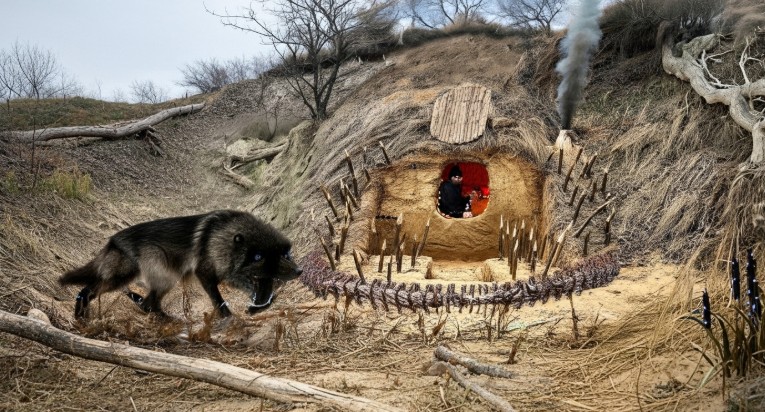
For three days on the Hungry Wolf Trail, I challenged myself to build a solo dugout shelter using only what the land provided. I began with a careful survey of the terrain, selecting a spot with natural protection, decent drainage, and access to wood and soft earth. The first stage was to dig into the hillside, creating a recessed living area that would be shielded from wind and rain.
Armed with primitive tools, I carved out the space—removing soil and shaping walls by hand. I reinforced the dugout’s sides with thick branches and logs to prevent collapse, cross-lashing their ends and packing mud for stability. The process was physically demanding, requiring patience as I expanded the shelter deep enough for comfort and safety.
I fashioned a roof using interlaced saplings, topped with layers of leaves, moss, and bark to keep the interior dry. Every detail mattered: the angle of the roof helped shed rain, while side trenches diverted water away from the dugout during storms. Inside, I spread pine needles and grass for insulation and comfort, organizing my gear and tools within easy reach.
The five key elements I focused on were concealment, insulation, drainage, accessibility, and fire safety. I constructed a small firepit just outside the entrance, positioned to avoid smoke buildup yet close enough to keep the living area warm. Throughout, I foraged for food along the trail, cooked simple meals, and remained vigilant for wildlife.
By the final day, the dugout stood as a reliable bushcraft refuge—built with endurance, resourcefulness, and respect for the natural environment. This shelter provided protection, warmth, and a sense of accomplishment, serving as proof that with determination and skill, it’s possible to thrive solo in the wild, even under challenging circumstances.


